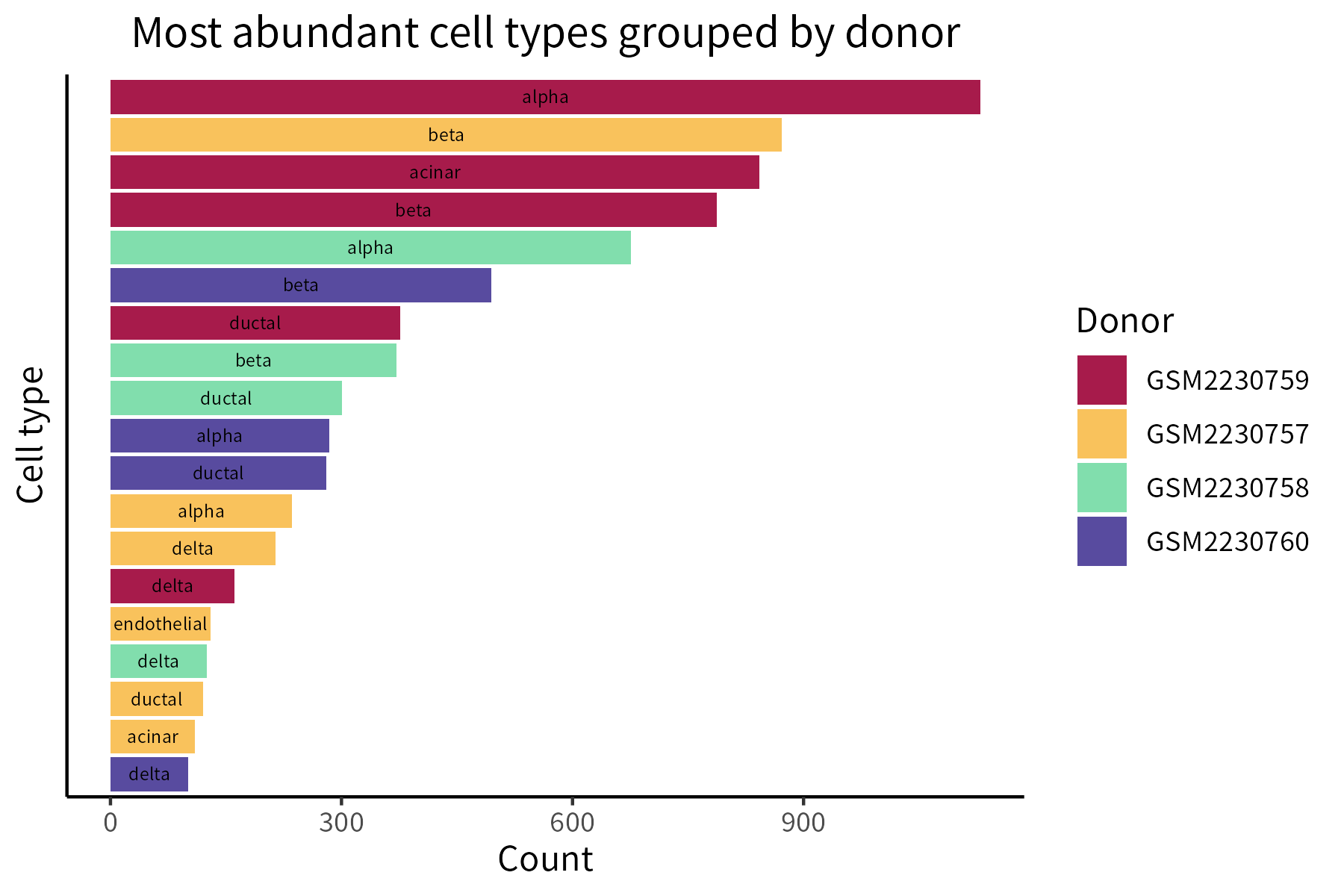
henna provides nine versatile visualization utilities.
They are designed with scRNA-seq data analysis in mind, but can be used
for a variety of other applications as well.
To install the version of henna currently available on
CRAN, run the following R code:
install.packages("henna")Alternatively, you can install the most recent development version using this code:
devtools::install_github("andrei-stoica26/henna")At present, both versions are the same (0.3.4).
All tools are demonstrated here using the human Baron pancreas (HBP) dataset, available as part of the scRNAseq package.
This function creates a bar plot for a set of items grouped by class, ordering the items and classes based on counts. An application is representing data coming from two categorical columns of a scRNA-seq expression object. Here, we render selected donor and label information from the HBP dataset:

This function plots a correlation matrix. We use gene expression data from the HBP dataset:

This function creates a density plot for a set of points, optionally displaying segements between each point and its nearest neighbor. Here, we subject expression data from the HBP dataset to a distance matrix calculation and subsequent MDS reduction in order to generate the coordinates of the points:

This function plots a set of points together with the convex hull. Optionally, it divides the points into 2 or 4 classes of different colors by drawing a vertical and/or a horizontal line that intersects the hull.
An application is visualizing shared cluster markers. Here, we display the shared markers of the alpha and delta clusters from the HBP dataset, highlighting the top ones in purple:

This function plots a graph using different colors for nodes that are part of different connected components.
An application is visualizing genes with a strong overlapping expression in terms of cells showing the highest (90th percentile and above) expression of the gene.

This function plots positive integer-valued points over concentric circles, with points located more centrally representing higher values.
It can be used to showcase genes involved in a network. Just like
networkPlot, radialPlot can distinguish genes
belonging to different connected components:

This function aggregates multiple ranks available for a group of items in a single plot. Average ranks can be displayed on the plot. Here, we visualize the ranks of 12 genes as markers of the alpha, beta, delta and gamma clusters in the HBP dataset:

This function generates an alluvial plot for a data frame with two categorical columns and a weights column. As an example, it can represent the significance overlaps between cell type markers and donor markers in the HBP dataset. Stronger overlaps correspond to thicker connecting curves:

This function plots a numeric matrix. Here, we use shared cluster markers as an example:
